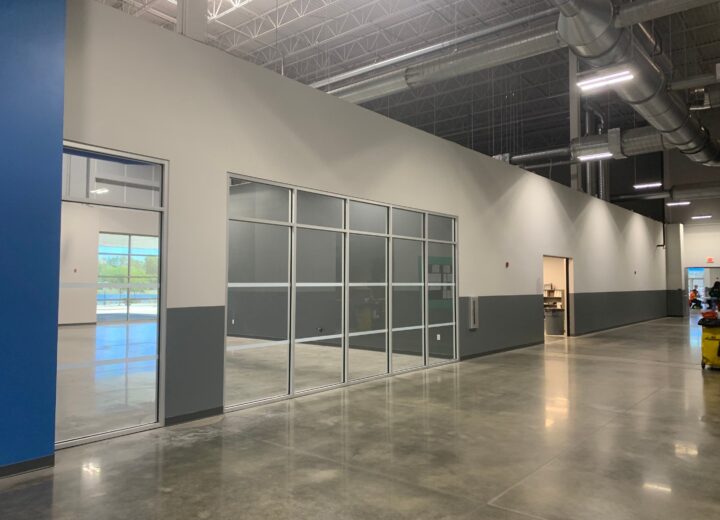
Painting any large building is a monumental task, but when you add extreme heights to the equation, things can get downright dangerous. Even for the most enthusiastic DIYer, taking on a project such as painting a commercial or industrial building should be where you draw the line. If you’re planning on having your commercial building painted in the near future, here are a few things to consider.
Safety
The biggest hurdle to getting your building properly painted is dealing with the heights safely. Professional painters use a variety of safety equipment and techniques to ensure that they won’t fall while they are navigating the upper walls of your commercial or industrial building, This can include everything from lifts to harnesses to specialized painting tools that are made for extended reach and easy maneuverability. The average person will not have access to this equipment, much less the necessary training required to use the equipment properly. It simply is not worth the safety risk to yourself or your employees to attempt this job on your own.
Surface Preparation
Surface preparation can make or break your paint job. Unfortunately, the exterior walls of your commercial building are likely to gather dust, mold spores and moisture as they are exposed. A professional painter will take the time to pressure wash or otherwise prepare the surface to accept fresh paint, thereby ensuring that the new paint sticks firmly to the surface and doesn’t flake or peel as it dries. Surface prep is a time-consuming process under the best of circumstances, but when you’re trying to work on lifts and ladders, it gets even more complicated and could add days or weeks to your job completion time. Even if you could do the painting on your own, it’s not likely that you would have the expertise to prepare the outer surfaces before you do, and a botched paint job will cost you more to fix than just paying a professional to do it right the first time.
Wind and Weather
Professional paint crews know how to plan for the weather. They bring enough team members to get the job done quickly while working around any rain or other weather delays. This is all carefully planned to guarantee that your fresh paint has plenty of time to cure without getting damaged. Even during the dry season, harsh and unpredictable winds can add an element of difficulty to the task. Wind affects your ability to use certain safety equipment, and can also change the way your paint is applied to the surface. The higher you climb, the stronger the wind gets, and if you have not been trained to deal with these challenges, you may find yourself with an uneven paint job that needs to be touched up later.
Choosing Materials
As with any work that goes on outside of your building, you do have a responsibility to make sure that all building materials are safe and being used correctly. Exterior paints are designed to hold up in various weather conditions, and often include mold-resistant or other additives to help protect your commercial building. Unfortunately, as you paint from the top of your building, you will find that overspray and spills can be a problem. The paint you’re spraying from the top of your lift could be picked up and carried any number of other places in the vicinity. Awareness of this and proper planning is crucial to keeping everyone safe and healthy.
Before you attempt to paint your own commercial or industrial building, make sure you consult with our experts. We can help educate you about what it is that we do to keep your team as well as ours, safe during intense paint projects such as, extreme heights for your commercial or industrial building.






